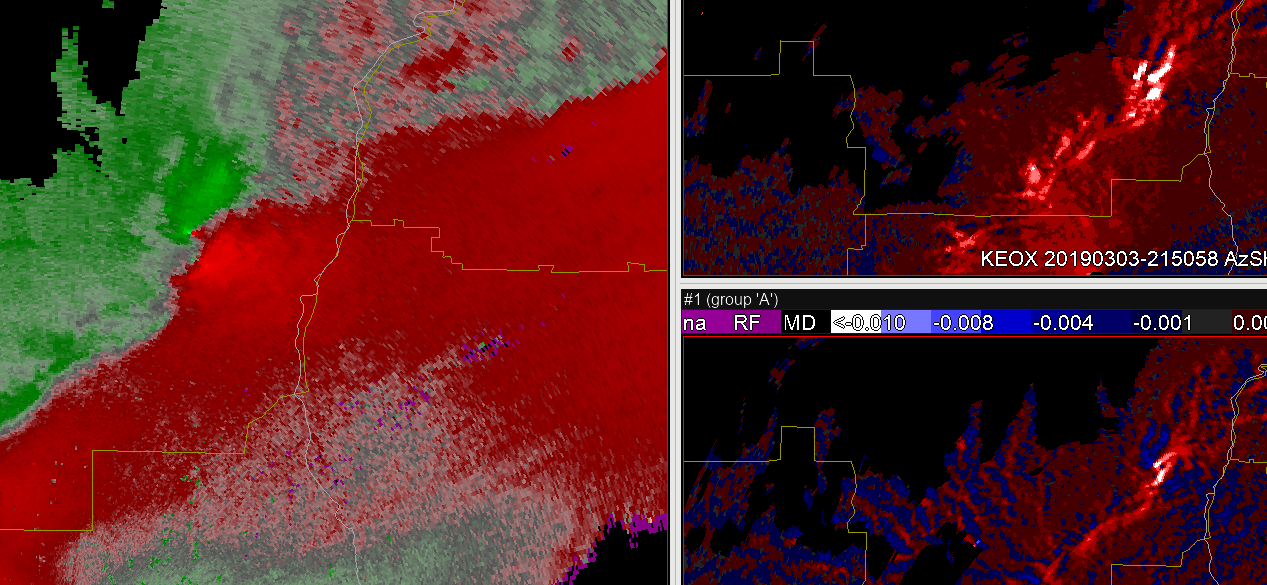Right off the bat at the beginning of the simulation KEOX AZShear max really jumps out at you! A great SA example to quickly hone in on area of concern. 0-2 km Azshaer also very good.
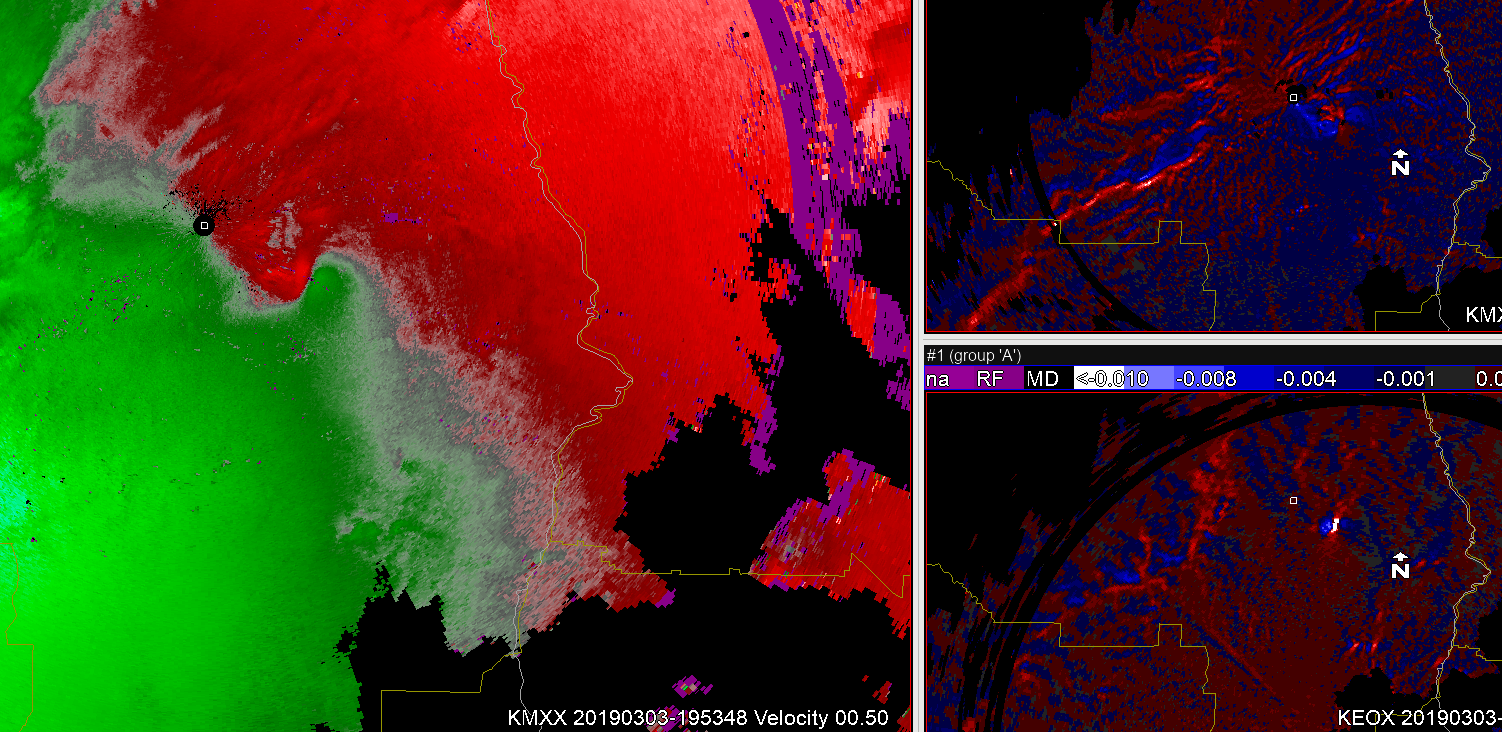
Focusing on the squall line upstream, really like the way the elongated max in AZShear draws attention to the increasing shear along leading edge (updraft-downdraft convergence zone UDCZ) of the surging portion of the QLCS. Often a precursor to MV intensification along the UDCZ. 66
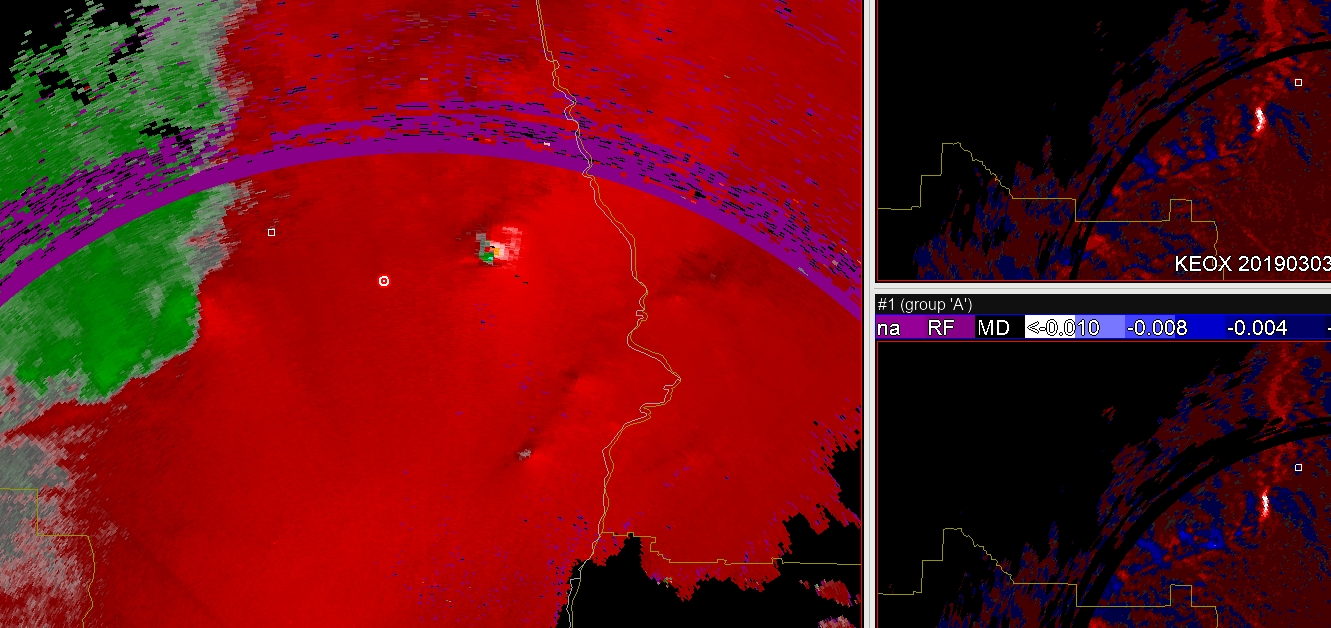
The following sequence shows the evolution of a mesovortex along the UDCZ a little later in the event. The first panel nicely shows a MV forming (left portion of SRM below) with a AZShear max evident at that location as well. The second panel below suggests that the MV starts to fall back just behind that leading UDCZ while the AZShear maintains a max with that circulation. What is even more interesting is that in the 0.5 AZShear in particular, you can still see an elongated area of enhanced shear associated with the leading UDCZ just downstream from the MV. You can see these two distinct features even more clearly in the last panel below. In summary I think the 0.5 and 0-2 km AzShear can hep forecasters identify increasing shear along the UDCZ where it is starting to surge…and then identify subsequent MV development and evolution along the surging UDCZ.
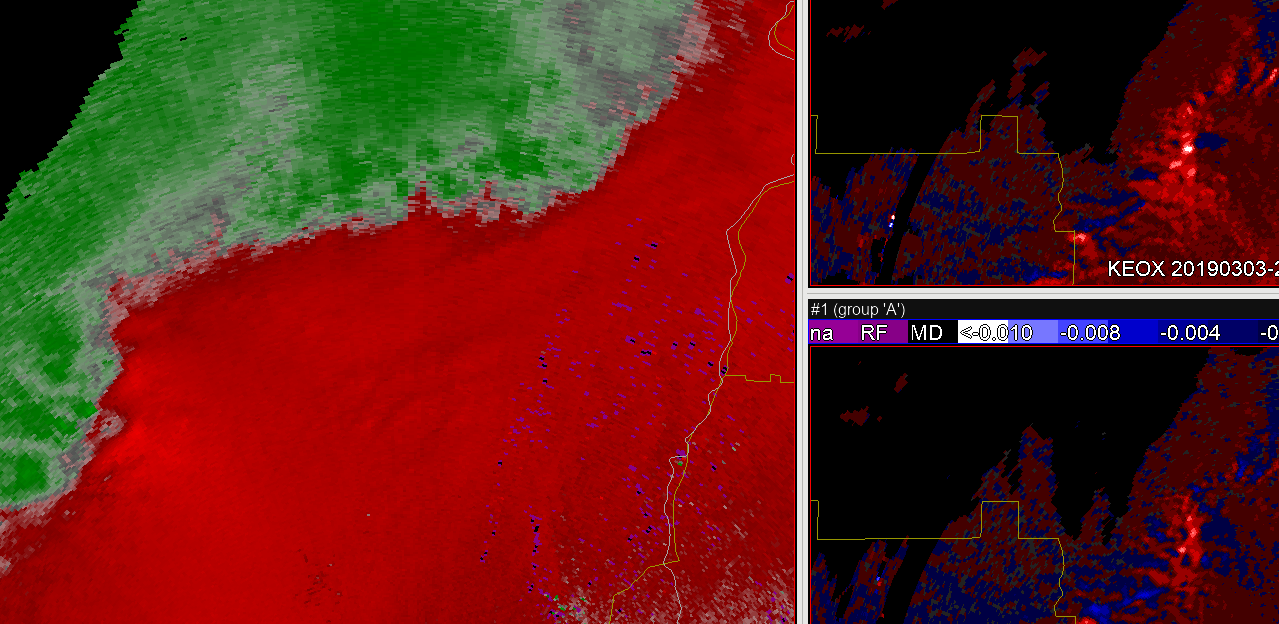
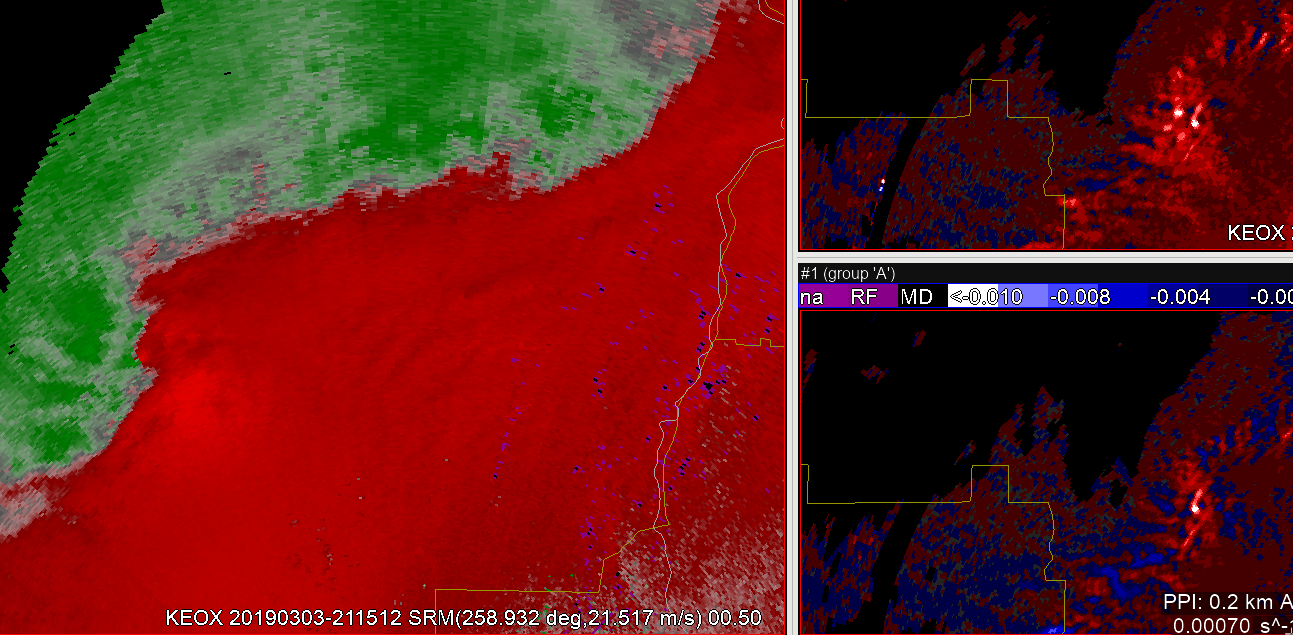
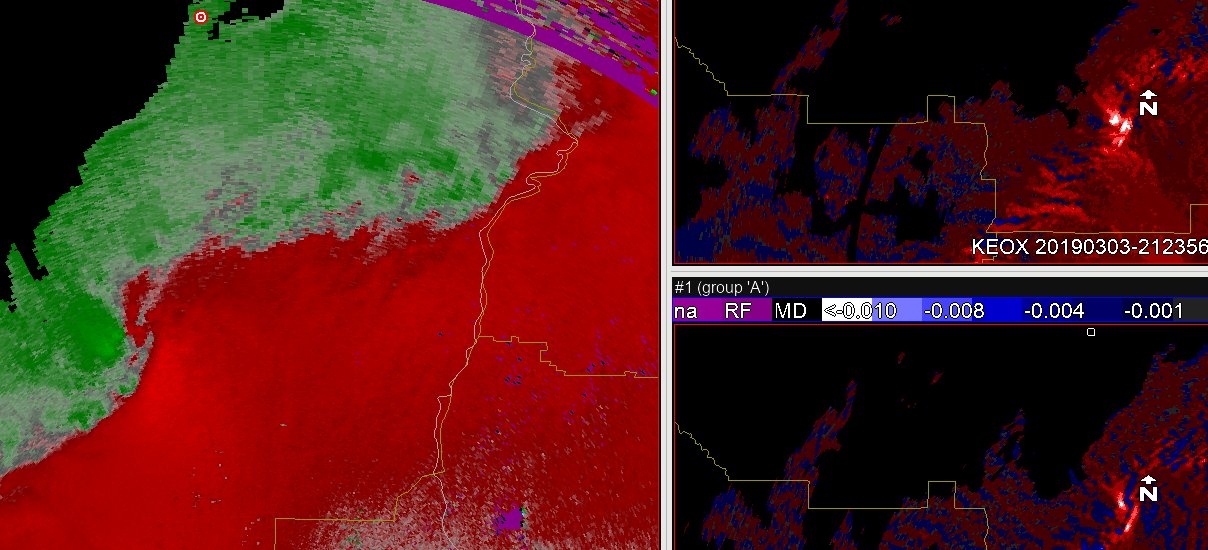
Finally, the image below is several volume scans later showing a very similar sequence as that described above. A an elongated area of enhance VrShear develops along the UDCZ followed by subsequent MV development. The MV below in the SRM image is appears to be very likely tornadic at this time. The 0.5 AzShear (lower right) shows the enhance VRShear with the tornadic MV falling behind the leading UDCZ…and a continuation of the elongated enhanced shear along the surging UDCZ. This case demonstrated to me that the AZshear can certainly enhance the warning decision makers SA for more quickly identifying line surges and subsequent QLCS MV development. Given QLCS MVs tend to form in the around 2 km or so, the 0-2km Azshear product may be of added value to identifying the area of enhance shear a bit sooner perhaps providing a bit more lead time on possible tornado warning – Great Case! – Quik Twip.
